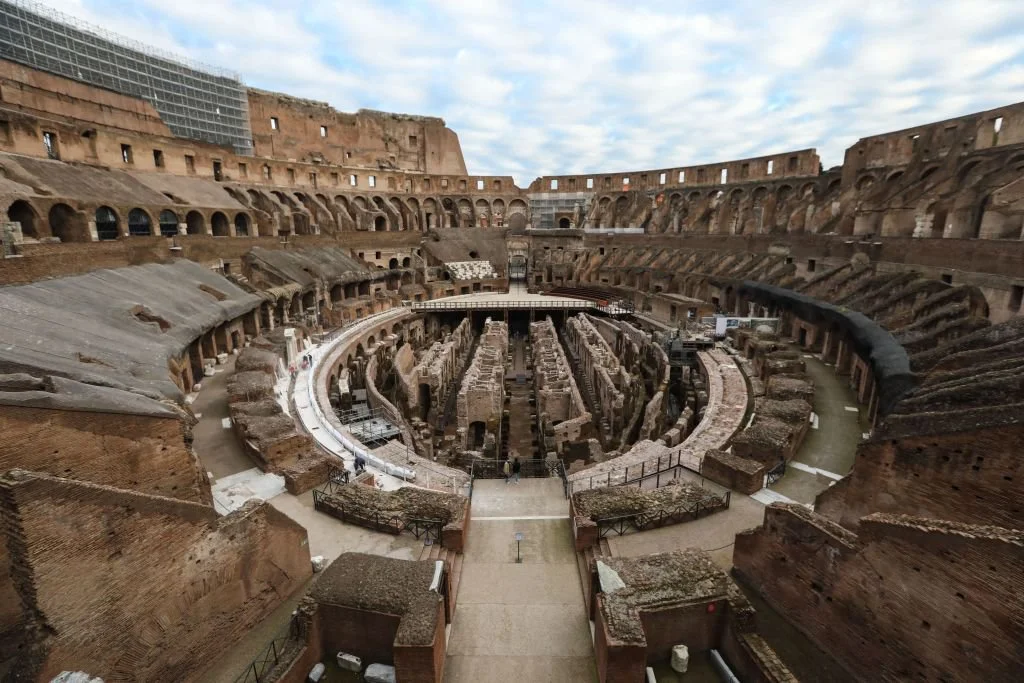By: Marina Han
The Coliseum in Los Angeles is always transitioning from one event to another, changing their grounds based on the type of event, whether it be rock concerts, sports games, auto races, motocross championships, or more.
The staff at the Coliseum are used to transforming the grounds non-stop. The ground could be ice, snow, asphalt, dirt, or any other type of platforms. Therefore, the staff has to learn some tricks to make the transitions smoother, but nonetheless, workers can still feel anxious about the arduous process of transformation. “The Coliseum wasn’t built for just one purpose,” said Frank Guridy, a Columbia University professor who studies the civic impact of stadiums and arenas, to Los Angeles Times journalists. “It’s a good, old-fashioned, single-tiered facility big enough to accommodate a bunch of different things.” But how does the Coliseum really transform so quickly between events?
It all started in 1923 when the Coliseum first opened, and it was a frustrating trial-and-error process. In the summer of 1936, Sonja Henie, a figure-skating champion, was invited to perform at the Coliseum. Workers used an ice-making machine to lay out an entire 80-foot-long rink. However, it was way too hot and the ice melted, so the show was canceled.
For a ski-jumping competition in the Coliseum during the winter of 1938, workers built a gigantic wooden ramp that started at the very top of the stadium and dropped down onto the field. There were also snow-making machines that generated a layer of snow atop the ramp. But soon, torrential rains and storm clouds blew in, delaying the show. Luckily, the competition started again 2 days later.
Other epic transformations of the Coliseum include the creation of a clay track for motocross and an island for a World War II rally. The Superbowl of Motocross took place in the stadium, using more than 6,000 cubic yards of clay and deposited granite to create landscapes and obstacles for the riders. For the rally, the military and Hollywood set designers constructed an entire South Pacific island right in the center of the Coliseum.
But how does the Coliseum protect their turfs for the regular sport games? Promoters of the Coliseum and workers tried to use all sorts of layers to cover the turfs like wood shavings, plywood, and carpets, but none of them really worked well. In 1974, a promoter told the Los Angeles Times that they “laid plastic down over the grass but it ripped in several places and the Coliseum drains were clogged with dirt.” So, the Coliseum decided on a completely new plan. Instead of trying to heal the turf after a non-sport event, workers took it down and added a new platform. “Anything that’s going to be out there for any length of time, when coupled with a lot of weight … the turf is pretty much toast underneath,” Scott Lupold, the grounds manager of the Coliseum, told the Los Angeles Times. Basically, there is no point in trying to reheal the turfs, if and when they are already badly damaged.
Fortunately, sod farms in Palm Springs and Coachella Valley provide fields for the Coliseum. “We’ve got multiple fields being grown out there for different events,” Lupold reported to Los Angeles Times journalists. “We know what we’re getting and we know how to get it to a point where it’s ready to roll.” Every couple months, Lupold checks the farms, making sure that a field is ready for the next event. However, frequently changing turfs is extremely expensive.
The drastic transformations of the Coliseum can make some of the workers very nervous.
“Plenty of sleepless nights,” Lupold said to the Los Angeles Times. “I’m a worrier by nature.” He said that for some time, he did not calm down when the ground had to be replaced by turfs for a game after a German rock band concert. He only relaxed after knowing that the players were fine and no hunks of turf were yanked up during the game. He always has to keep the fields perfect and what it needs to be.
Unexpectedly, the Coliseum has been successful at pulling off all the setting changes. Hopefully, that can continue! The stadium has taken care of so many events and none of them would have happened without the venue and its team. The workers like Lupold work so hard to make the events perfect. So, thank you for everything, Coliseum!











